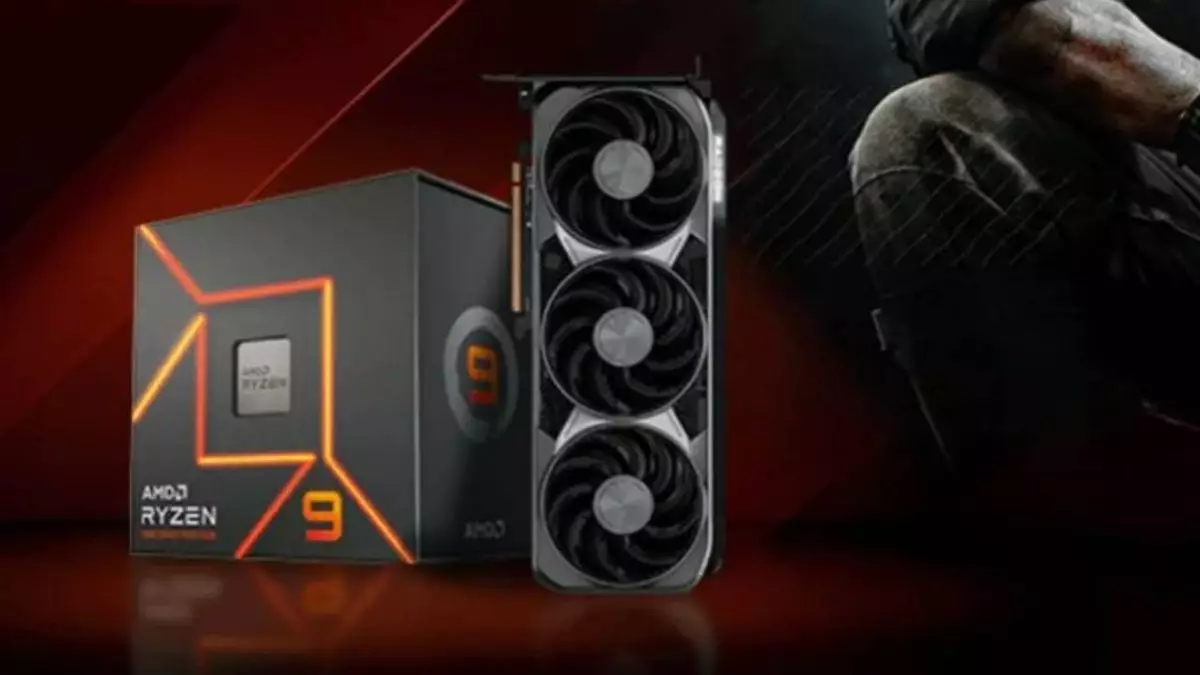The graphics card market is abuzz with excitement as the countdown to the Consumer Electronics Show (CES) 2025 begins. This annual event has become a significant platform for technology giants like Nvidia and AMD to unveil their latest advancements, particularly in the realm of graphics processing units (GPUs). Expectations are high for the next generation of AMD’s graphics cards, with industry insiders hinting at a potential rebranding from the anticipated RX 8000-series to a bold RX 9000-series designation. This article delves into the rumors and speculations leading up to this crucial reveal and discusses what it might mean for the gaming and tech community.
One intriguing aspect of this upcoming generation is the proposed change in naming conventions. Traditionally, AMD’s series of GPUs progressed numerically in a straightforward manner—RX 5000, RX 6000, RX 7000. However, the potential leap to RX 9000-series not only breaks this pattern but suggests an intention to align the GPU lineup with AMD’s latest Zen 5 CPU series, which also adopts the 9000 designation. This synchronization could facilitate a more coherent branding strategy, making it easier for consumers to navigate their options.
Reports from leakers suggest that the RX 9000-series will represent fully-fledged RDNA 4 architecture while the RX 8000-series may incorporate the RDNA 3.5 architecture. This distinction is critical as it hints at a segmented approach to performance, allowing AMD to target various market segments more effectively. Moreover, if these leaks hold any water, the difference between the new generations could be marked not merely by incremental upgrades but a significant leap in performance capabilities.
As speculations swirl, performance expectations for the forthcoming RX 9070 and RX 9070 XT models are setting the stage for AMD to potentially redefine its position in the graphics card arena. Preliminary numbers suggest that the RX 9070 XT might showcase a 45% improvement in ray tracing performance over the existing RX 7900 XTX, along with raster performance competitive with Nvidia’s RTX 4080. If these metrics align with the actual capabilities when launched, they could offer serious competition to Nvidia’s offerings.
Nevertheless, AMD seems to be intentional about its market positioning. Statements from AMD’s representatives indicate that the company is not necessarily looking to dominate the high-end market this time around. Instead, it appears they are focusing on delivering value within a mid-range segment, which suggests that the pricing might be strategically low. If AMD can balance high performance with accessibility, it might strike gold with a large audience of gamers and content creators.
Adding to the intrigue, an accidental reveal of images showing one of the new designs has surfaced, courtesy of an observant Reddit user. These images featured a striking black and silver cooler design that deviates from AMD’s previously established aesthetics. While some may downplay the significance of design in a card’s performance, the visual appeal of a product often influences consumer choice. A sleek and modern design, combined with rumored capabilities, could pique interest and elevate public perception of AMD’s new offerings substantially.
Moreover, the potential for AMD to introduce bundle deals featuring their GPUs alongside Ryzen CPUs could foster a more integrated user experience, enticing buyers to opt for AMD’s full ecosystem rather than piecing together components from different manufacturers. Historically, effective marketing strategies that emphasize compatibility and performance have been successful in galvanizing consumer support.
As AMD gears up for its CES 2025 showcase, the dynamics between AMD and Nvidia will continue to play a pivotal role in shaping consumer expectations. With Nvidia’s advancements in AI-driven technologies like DLSS, AMD’s response with FSR 4, rumored to incorporate AI enhancements, could be a crucial battleground. This competitive tension pushes manufacturers to outperform one another, benefitting consumers with enhanced product selections.
While the hype continues to build around the RX 9000-series, it remains important for gamers and enthusiasts to temper their expectations with a measure of skepticism. Leaks and rumors often circulate widely in the tech industry, and until official announcements are made, the true capabilities of AMD’s upcoming GPUs will remain speculative. Nonetheless, CES 2025 promises to deliver exciting revelations that could reshape the landscape of graphics cards for the coming years.
The anticipation for AMD’s next-generation hardware signifies a pivotal moment in the world of graphics technology, and as gamers prepare for what lies ahead, the gaming community holds its breath for the potential advancements that could redefine performance standards.

